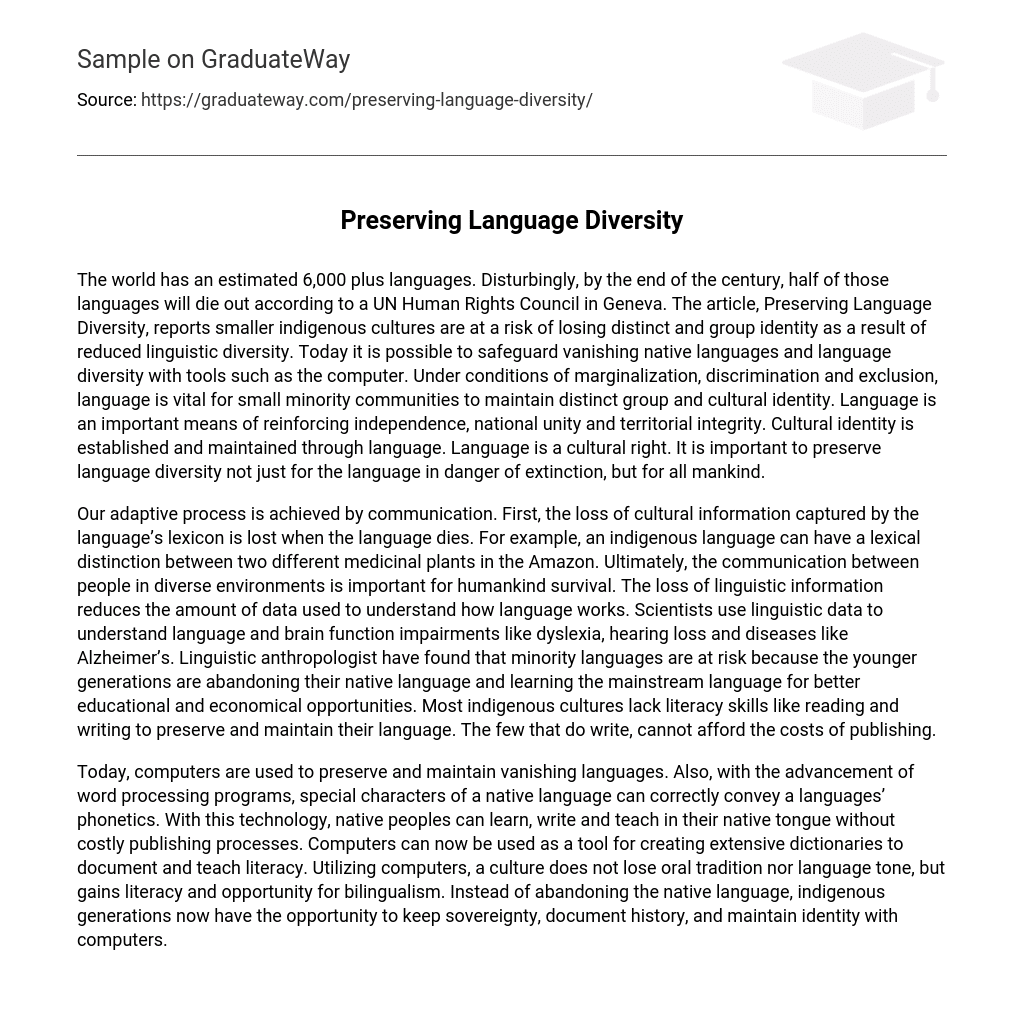The UN Human Rights Council in Geneva states that there are over 6,000 languages globally and unfortunately, around half of them will disappear by the end of the century. In “Preserving Language Diversity,” it is explained that this decline in linguistic variety puts smaller indigenous cultures at risk of losing their unique group identity. However, advancements in technology like computers now make it possible to protect endangered native languages and maintain language diversity. Language plays a crucial role in preserving the distinct cultural identity of marginalized minority communities who face discrimination and exclusion. It serves as both a means of reinforcing independence and unity within a nation and an essential cultural right. Hence, it is vital to preserve language diversity not only for endangered languages themselves but also for the benefit of all humanity.
Our adaptive process relies on communication. When a language dies, cultural information captured by its lexicon is lost. For instance, an indigenous language may have distinct words for different medicinal plants in the Amazon. Communication among people in diverse environments is crucial for human survival. The loss of linguistic information reduces the data available for understanding language and impairments such as dyslexia, hearing loss, and Alzheimer’s disease. Linguistic anthropologists have observed that minority languages are endangered because younger generations are forsaking their native tongue in favor of mainstream languages to pursue better educational and economic opportunities. Most indigenous cultures lack literacy skills like reading and writing, which hinders the preservation of their language. The few who can write often cannot afford the expenses associated with publishing.
Today, computers play a crucial role in the preservation and maintenance of endangered languages. Additionally, the advancement of word processing programs enables the accurate representation of special characters that convey phonetics unique to a particular language. This technological development allows native individuals to learn, write, and teach in their mother tongue, eliminating the need for expensive publishing processes. By utilizing computers, communities can create comprehensive dictionaries that serve as valuable resources for documentation and literacy instruction. Therefore, computers serve as a tool that not only facilitates written communication but also ensures the continuity of oral traditions, language nuances, while promoting bilingualism. Instead of abandoning their native language, indigenous generations now have the opportunity to uphold their sovereignty, preserve historical records, and maintain a distinct cultural identity through the use of computers.





